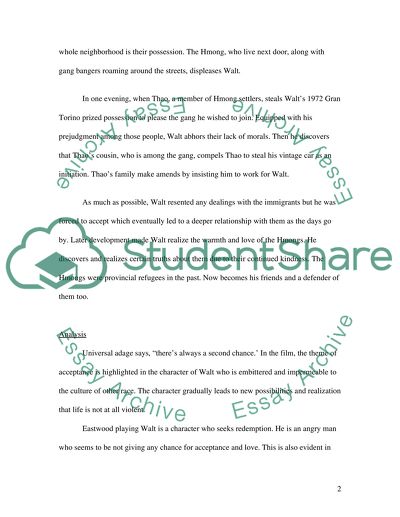Cite this document
(“Film Analysis - Gran Torino 2008 Movie Review Example | Topics and Well Written Essays - 2500 words”, n.d.)
Film Analysis - Gran Torino 2008 Movie Review Example | Topics and Well Written Essays - 2500 words. Retrieved from https://studentshare.org/miscellaneous/1560996-film-analysis-gran-torino-2008
Film Analysis - Gran Torino 2008 Movie Review Example | Topics and Well Written Essays - 2500 words. Retrieved from https://studentshare.org/miscellaneous/1560996-film-analysis-gran-torino-2008
(Film Analysis - Gran Torino 2008 Movie Review Example | Topics and Well Written Essays - 2500 Words)
Film Analysis - Gran Torino 2008 Movie Review Example | Topics and Well Written Essays - 2500 Words. https://studentshare.org/miscellaneous/1560996-film-analysis-gran-torino-2008.
Film Analysis - Gran Torino 2008 Movie Review Example | Topics and Well Written Essays - 2500 Words. https://studentshare.org/miscellaneous/1560996-film-analysis-gran-torino-2008.
“Film Analysis - Gran Torino 2008 Movie Review Example | Topics and Well Written Essays - 2500 Words”, n.d. https://studentshare.org/miscellaneous/1560996-film-analysis-gran-torino-2008.


